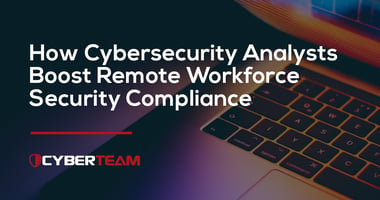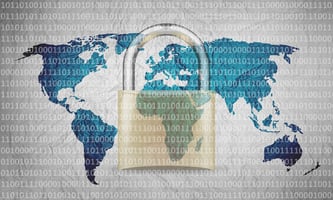The rise of the remote workforce over the last decade delivered cost-effective benefits to growing...
How to Prevent Ransomware Attacks: Trends, Evolution & Risk Mitigation

The growing extortion costs, tarnished reputations, and work stoppages are reasons why industry leaders need to know how to prevent ransomware attacks and harden their cybersecurity.
The average price of a data breach exceeds $4.45 million, and the 2023 Cost of a Data Breach Report published by IBM indicates that upwards of 37 percent of ransomware victims do not report incidents. If you add those figures to the collected data showing attacks stood north of 493 million in 2022, preventing ransomware attacks has become mission critical.
What Businesses Need to Know About Ransomware Trends
This criminal scheme works much like a physical kidnapping, only your digital assets are taken hostage. Cybercriminals typically deploy thousands of malware-laced emails and other electronic messages in hopes an employee will mistakenly click on a malicious link or download the wrong file. Once that happens, hackers can seize control of your network and demand a payoff in either real money or (increasingly) cryptocurrency. These are disturbing trends that highlight the need for ransomware mitigation efforts.
Ransomware Gangs Focus on Data Extortion
Cybercriminals continue to hone their schemes and online gangs are targeting a new class of businesses. The old model involved shutting down organizations that relied on productivity. Downtime gave thieves leverage to negotiate high ransoms. That approach has shifted to taking on heavyweight outfits whose reputation may be equal to or more valuable than time. Using the threat of publishing valuable and sensitive data on the internet, or selling it on the dark web, data extortion for cryptocurrency — which is easier to keep anonymous — is now a powerful exploitation trend.
Zero-Day Exploitation
A ransomware gang calling themselves LockBit reportedly posted a so-called “bounty” of $50,000 for information about software weaknesses that have yet to be patched. These vulnerabilities are the subject of zero-day attacks that allow online criminals to exploit software and penetrate networks using the applications. It appears zero-day ransomware attacks are about to become an emerging threat.
Ransomware as a Service (RaaS)
It’s important to understand that cybercriminals are not just maniacs running loose on the internet. Many are business-minded individuals acting without a moral compass. That is to say, they’re in it for the money.
Many of the same nefarious individuals who developed ransomware applications and schemes are now offering their tactics and files for a price. This trend is particularly frightening because it means even garden variety hackers with few skills can purchase sophisticated RaaS.
Adopt Effective Ransomware Attack Prevention Strategies
Knowing how to prevent ransomware attack intrusions remains a primary cybersecurity goal. By that same token, security experts understand that hackers relentlessly lust for ill-gotten gains and that no system is entirely safe.
That’s why managed IT and cybersecurity firms urge organizational leaders to invest in forward-facing defenses and a comprehensive ransomware backup strategy. These are ways you can deter hackers and recover from a ransomware attack if necessary.
Cybersecurity Awareness Training
More than 80 percent of all data breaches are the result of human error. Dedicated employees are tricked into clicking on a malicious link or opening a malware-laced file. By providing cybersecurity awareness training, valued employees can identify threats and alert others. This is the first step in developing a robust cybersecurity culture.
Zero Trust Credentials
By segmenting your network and crafting login credentials with limited access, businesses can hamstring hackers from gaining access to valuable and sensitive data. Even if they learn someone’s username and password, they won’t be able to coerce company leaders or board members into paying extortion money.
Advanced Password Protections
Too many people use weak or repetitive passwords across multiple platforms, including their work login. That’s why onboarding protections such as two-factor authentication are crucial. This process sends a code to a secondary device that legitimate users must input before network access is granted. Unless a hacker is holding that device, the criminal is out of luck.
While determined cybersecurity provides ransomware mitigation, the importance of backing up everything cannot be understated. Consider backing up your data to multiple cloud locations, in-house hardware, and at least one storage device that can be taken offline. If hackers want millions to give you back control of your own organization, the ability to make a full recovery without paying the ransom is priceless.
What a Cybersecurity Consultant Can Do for Your IT Security
At CyberTeam, our managed IT and cybersecurity consulting experts have the experience and technology to protect your company from ransomware attacks. We start with a risk assessment and work diligently with business leaders to develop a comprehensive cybersecurity strategy. Contact us today and let’s get the process started.





